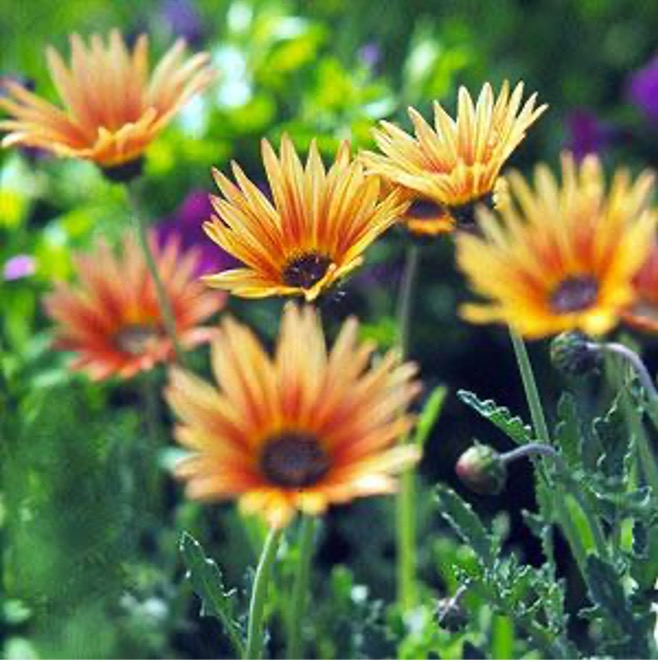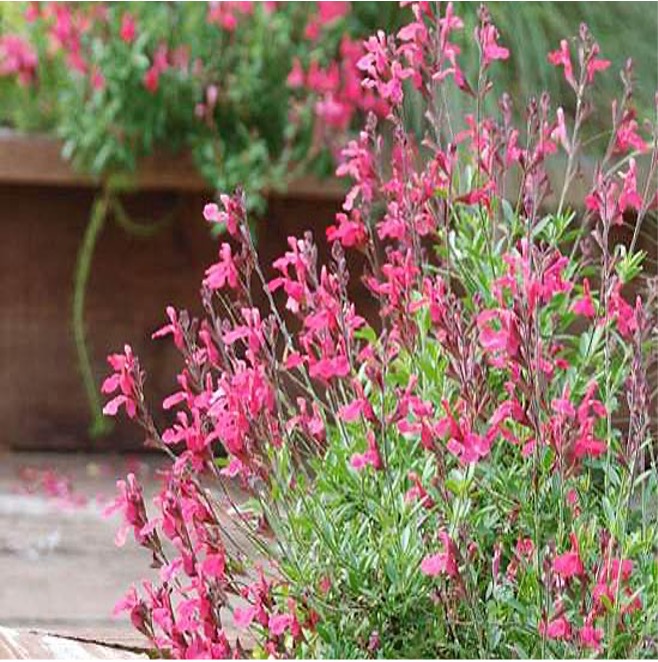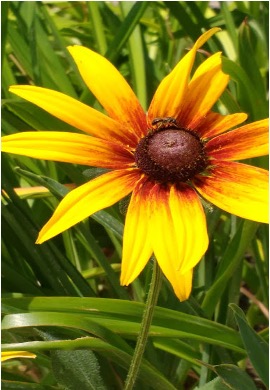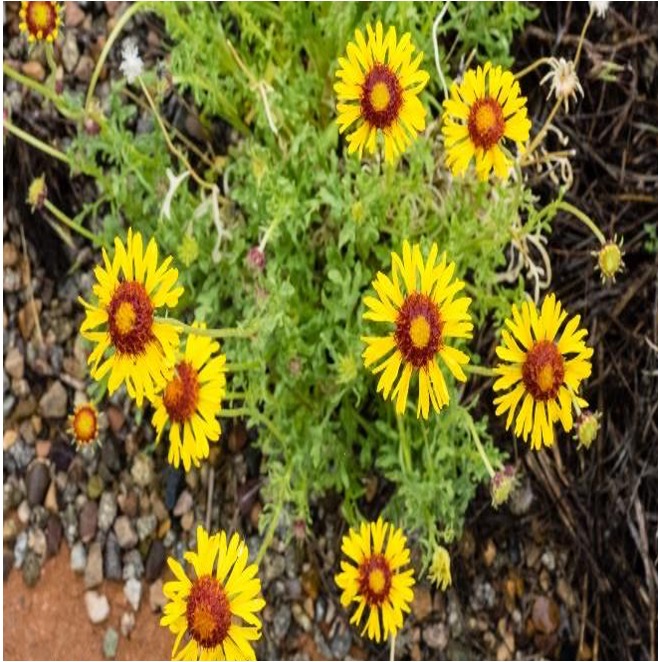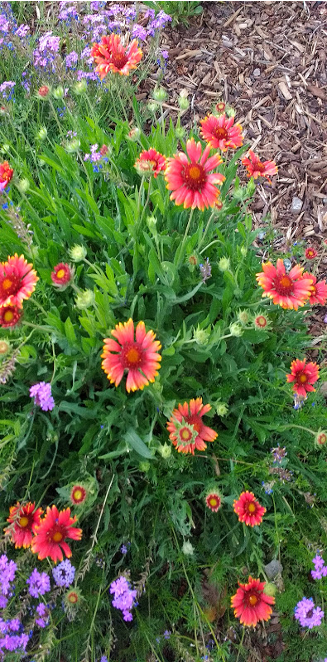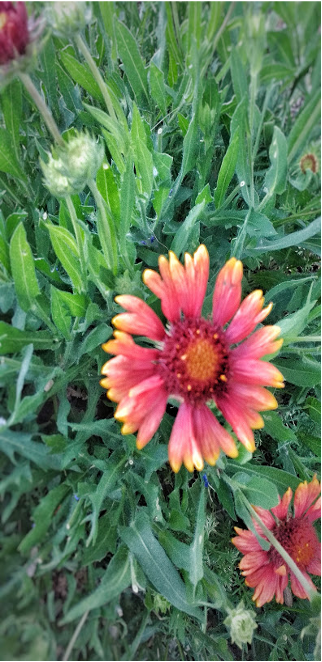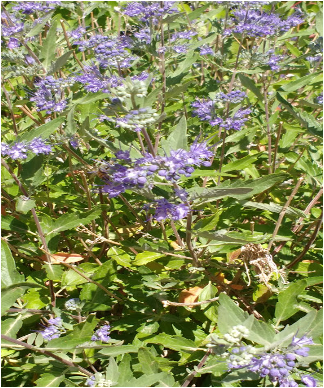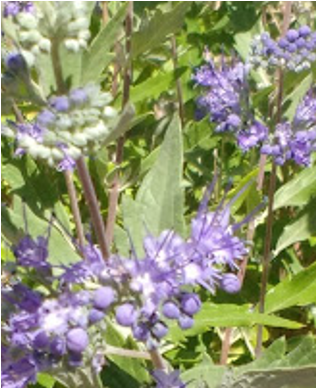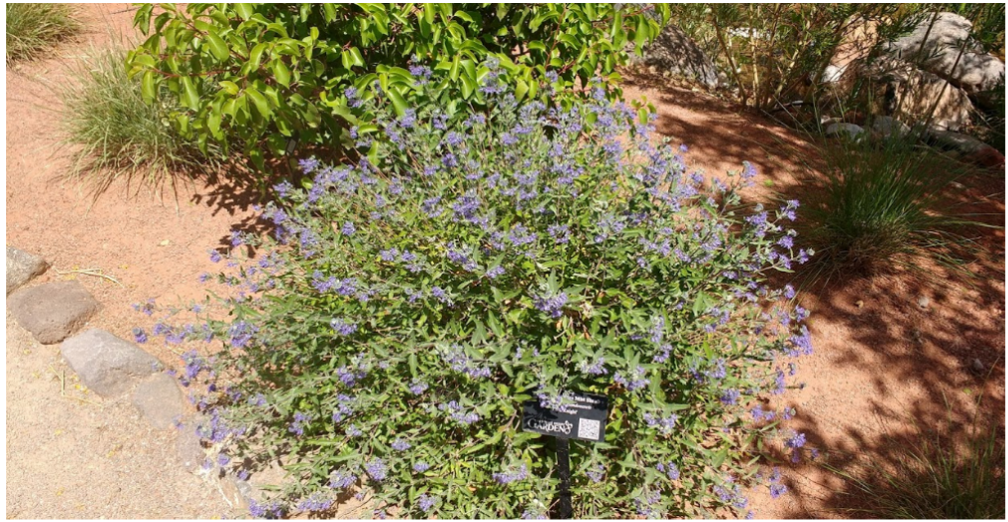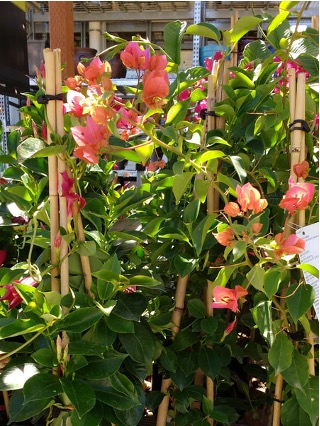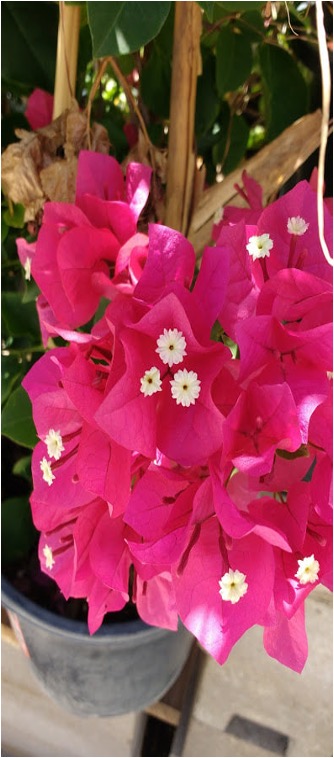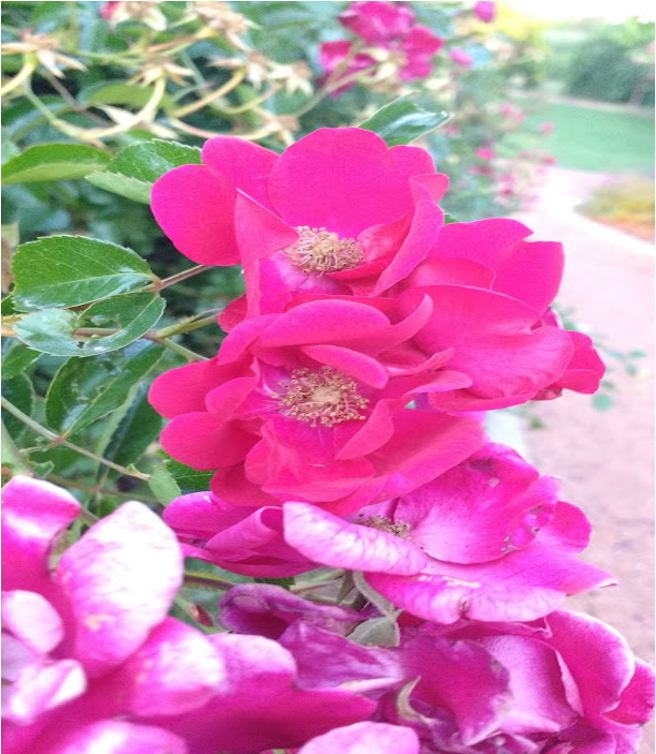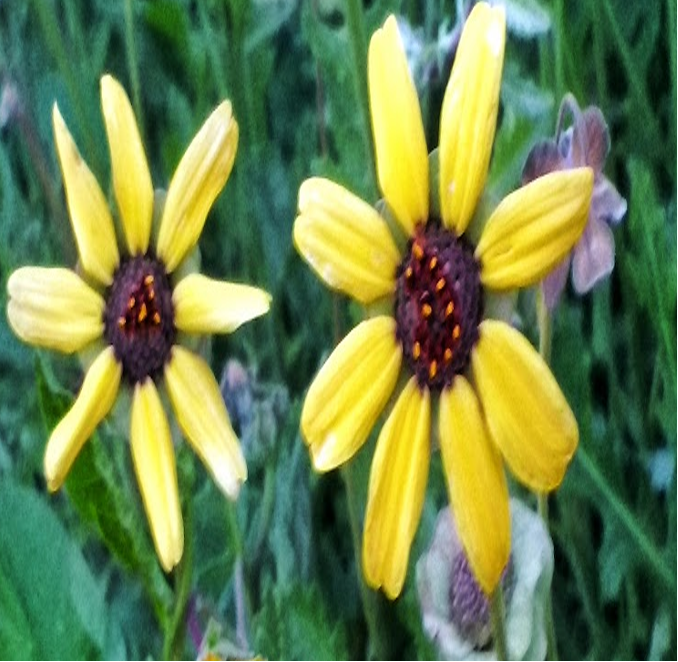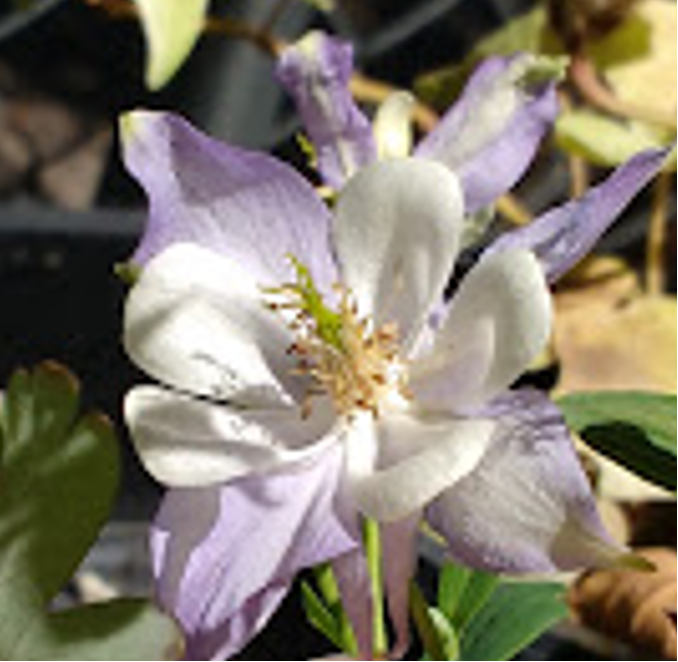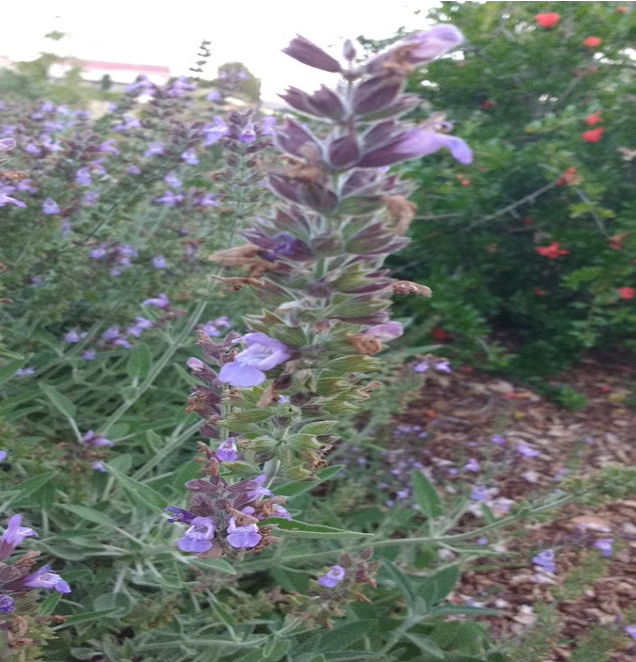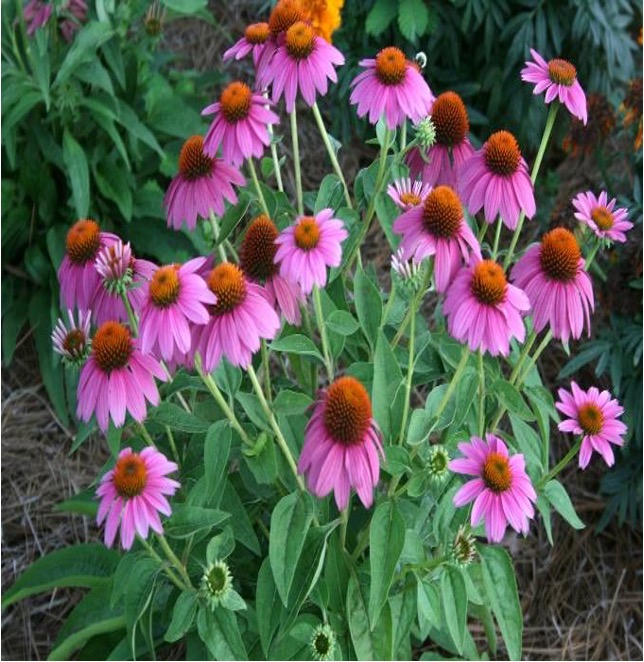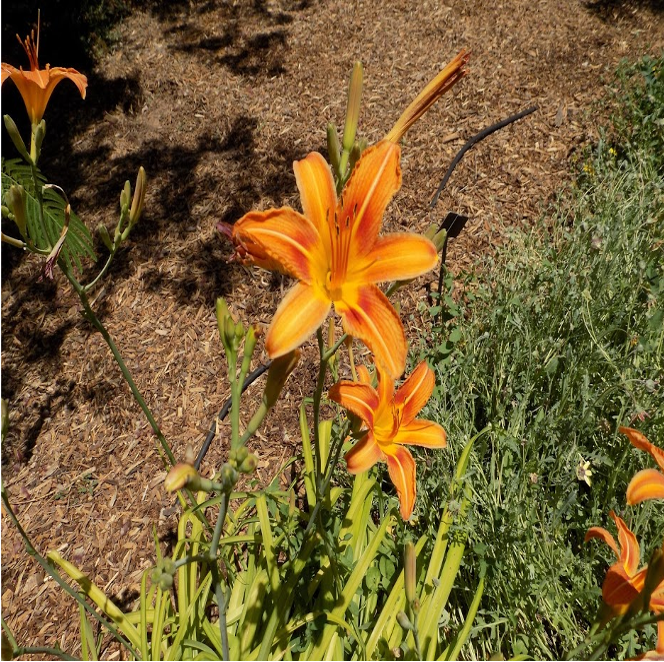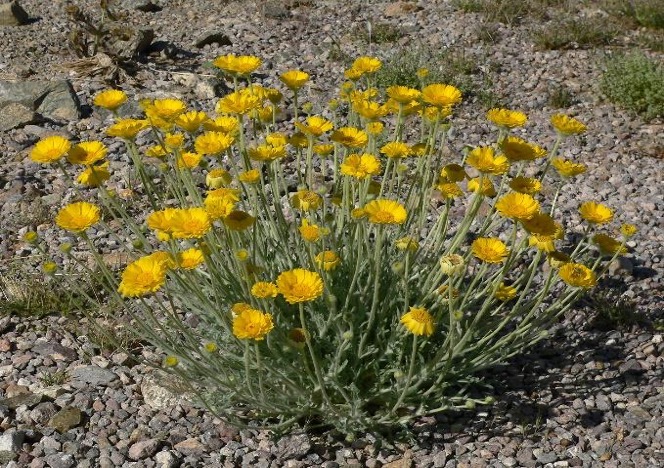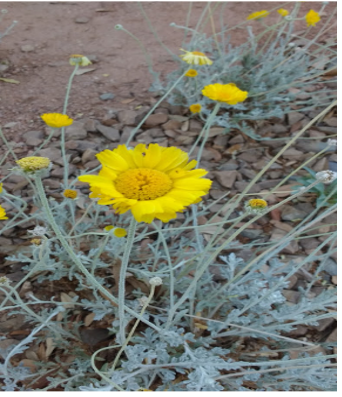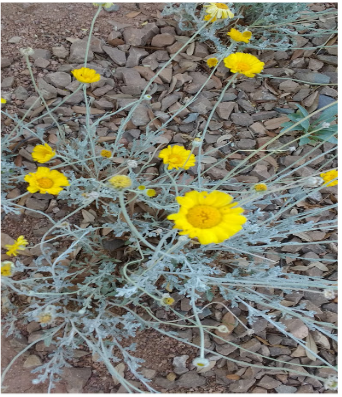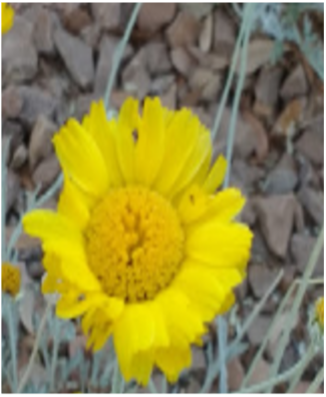There are many different flowers are adapted to Southern Utah. Most wildflowers and cacti beginning blooming in mid-April and continue until mid-May when temperatures increase into the 90s. Although wildflowers can be grown in home gardens, most of them have a short bloom season. There are many cultivated flowers that you can choose from to add color to your landscape, from Snapdragons in the Spring to Pansies in the Fall (to name a few). There is also an assortment of flowering vines that do very well in the St. George area. Some like “Honeysuckle” and “Lady Banks” are winter hardy. Others like Mandevilla and Jasmine will need protection if you plan to keep them over winter.
Flowers in Washington County
|
|
Common Name: African Daisy Botanical Name: Arctotis x hybrid Description: Full sun. Annual/Tender Perennial. Flowers close at night, in the shade, and during cloud cover. They come in a variety of colors including red, white, pink, and orange. They are also often bicolored. Its foliage is a remarkable green/silver color. The flowers tend to bloom less in extreme heat or cold due to the mild climate from which they originated. Showy large pretty flowers. Drought and deer tolerant. Not prone to disease or insect. Deep to pale green foliage. Water Use: Moderate Height: 12 - 18” Spread: 1’ Bloom: 3 - 4” Occurrence: April - August Bloom time: All season Zone: 9 - 11 |
|
|
Common Name: Autumn Rose Pink Sage Botanical Name: Salvia greggii Description: Partial Shade. Perennial. Enduring to a lower temperature as well as lower maintenance than most Salvias. Flowers grow in a mound and almost resemble a shrub. Grows best in sandy or rocky soils but is sometimes found in loamy soils as long as there is good drainage. Humidity, heat, and drought tolerant (as long as it has some shade in the extreme heat). Flowers are most commonly found in red but there are yellow, orange, and white flowers as well. Blooms are most bountiful in the spring and fall and recede with the heat summer brings. Water Use: Moderate to low Height: 2 – 3’ (sometimes up to 5’) Spread: 2 – 3’ Occurrence: Spring – Late fall Zone: 6 - 9 |
|
|
Common Name: Black-eyed Susan Botanical Name: Rudbeckia hirta Description: Partial sun (some shade is especially important in the hot summer months). Annual. Bright and large blooms that are generally a sunflower yellow but may (depending on the strain) have a ruby red pinwheel sprawling around the center of the flower. Flower does well in dry to moist soil conditions (adjust to increasing temperatures). Dark centers protrude much like coneflowers. Hairy stems and leaves. Plant may spread semi-aggressively in perfect conditions. Seeds may be harvested from the eye of the flower when they are mature and replanted the following year. Water Use: Low to moderate Height: 1 - 3’ Spread: 1.5 - 2.5’ Occurrence: Summer - Early fall Zone: 3 - 9 |
|
|
Common Name: Hopi Blanket Flower Botanical Name: Gaillardia pinnatifida Description: Sand desert perennial in the sunflower family. Drought tolerant. Full Sun. Several bright yellow ray flowers with red centers. Beneath are numerous maroon/purplish, or (commonly in Utah) yellow disk flowers. Water Use: Moderate Height: 1 - 3’ Spread: 1 - 2’ Bloom: 3” Occurrence: Bloom from late spring to mid-fall Zone: 5 - 10 |
|
|
Common Name: Blanket Flower Description: They do best in full hot sun. Short lived perennial. It’s a bright and hardy desert flower that blooms all season long. There are 13 species of blanket flower. Drought and dry soil tolerant. Produced above a clump of hairy, narrow, gray-green leaves, the blossoms have petals that may be solid colored shades of yellow, wine red, orange or peach, or may be banded in combinations of red or orange with yellow. Strains that can seed tend to do so if not deadheaded. The flower is daisy like in structure with long, thin, pointed leaves at the base. Water Use: Low to moderate Height: 12 - 24” Spread: 12 - 18” Occurrence: Early summer to mid-fall Zone: 3 - 9 |
 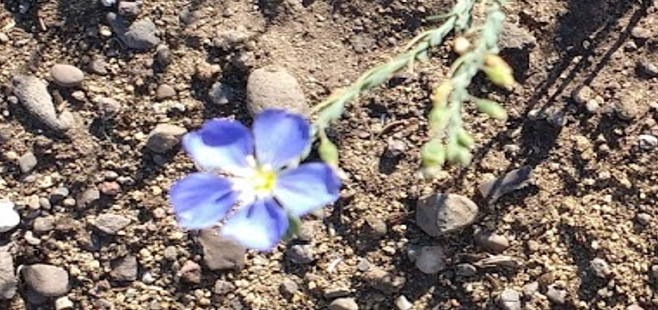 |
Common Name: Blue Flax Botanical Name: Linum lewisii Description: Full Sun. Short lived perennial. Drought Tolerant. Prairie flax tends to lean rather than send up stoically upright stalks. Pale blue or purple 5-petaled flowers produced on each stem from the bottom upward. Blooms last for a single day only (like a daylily) but grow in such abundance it is not noticeable. Plant prefers dry/sandy to neutral soils. Attracts bees, butterflies, and hummingbirds. Flower stems have many off shooting almost pine needle shaped leaves but are less prominent as the plant ages. Numerous pre-flowering globes also dot the plant. Reseeds itself. Water Use: Moderate Height: 1 - 2’ Spread: 1 - 1.5’ Occurrence: Blooms spring to fall Zone: 3 - 9 |
|
|
Common Name: Bluebeard, Blue Mist, Blue Spirea, ‘Blue Mist’ Shrub Botanical Name: Caryopteris x clandonensis Description: Full sun to partial shade. Perennial. Forms fragrant small light blue flowers. Doesn’t reseed but you can spread the plant via dividing tubers, soft bulbs, etc. Drought tolerant and low maintenance. Roots are winter hardy down to -10 to 0 degrees Fahrenheit. Prune back dead stems in the spring to encourage new stem growth. The common names comes from the flower which is said to look like blue mist. Grows well in crowded gardens. Not susceptible to disease or insect. Water Use: Moderate Height: 24 - 36” Spread: 24 - 36” Occurrence: Mid-summer - Early fall Bloom occurrence: Late summer Zone: 5 - 9 |
|
|
Common Name: Bougainvillea Botanical Name: Bougainvillea genus Description: Bougainvillea (Bouganinvillea sp.)Is a thorny ornamental flowering vine or shrub (depending on how it is trained). It is not tolerant of frost. Flower colors include white, pink, orange, purple and burgundy. Bougainvillea is often used in pots, and planters outdoors, or even in sunny locations as an indoor plant. When used outdoors treat as an annual or tender perennial. Water Use: Regular Height: Spread: Occurrence: Zone: 9 - 10 |
|
|
Common Name: Carpet Rose, ‘Pink Supreme’ Botanical Name: Rosa noare Description: Grows best in full sun, but still will grow in filtered sun/partial sun but not as remarkably. Perennial. Bold and brilliant pink. Easy to grow. Exceptional heat tolerant, and disease resistant. Other flower colors include reds, several shades of pink, white, and yellow. Prefers loamy soil. In full sun is more disease and pest resistant. Deadhead to increase blooms. Prune as desired in the spring. This species serves well as a ground cover. Particularly disease and pest susceptible so keep a careful eye on the plant for any early signs of either. Fragrant blooms. Water Use: Regular Height: 1 - 3’ Spread: 2 - 3.5’ Occurrence: Late spring-fall Zone: 5 - 9 |
|
|
Common Name: Chocolate Flower Botanical Name: Berlandiera lyrata Description: Full sun. Perennial. Yellow flower of the daisy/sunflower family, night blooming flower. The eye of the flower is brown. As the sun and temperatures rise so do the petals as they close around the eye of the flower or fall to the ground and their “chocolatey scent” becomes less pungent. Dies back to the roots if there’s a frost until it’s warm enough for the roots to send up a shoot, otherwise it will bloom year round. Water Use: Moderate Height: 12 - 18” Spread: 24” Bloom: 2” Occurrence: Has a larger crown each spring (April-November in many deserts). Can bloom year round temperatures permitting. Zone: 4 - 9 |
|
|
Common Name: Columbine Botanical Name: Aquilegia Genus Description: Full sun to partial shade. Short lived perennial. Preferring sun in the spring but shade in the summer heat. Heat tolerant if well-watered. Attracts bees and birds. Unique bell shaped flowers pointing up with additional petals spuring in the opposite direction downward. The Aquilegia genus comes in more than 60 species and in a variety of colors including red, white, yellow, purple, pink, and blue. There are also many bicolored and multicolored flowers. Flowers bloom high above the foliage. Water Use: Regular Height: Depending on the variety 1 - 3’ Spread: Depending on the variety 6 - 24” Occurrence: Late spring to early summer Zone: 3 - 9 |
|
|
Common Name: Common Sage, Garden Sage Botanical Name: Salvia officinalis Description: Full sun to partial shade. Perennial. Attracts butterflies, bees, and hummingbirds. Drought tolerant. Edible leaves. To encourage further and bushier leaf growth cut down plant pretty low at the end of its season for exceptional performance the next year. Excellent background/filler plant. Beautiful wands of light purple two-lipped flowers which are semi encased in a helix of darker purple. Prefers clay or loam soils. It takes 3 - 5 years to reach its ideal height. No major disease or insect problems. Water Use: Regular Height: 1.5 – 3’ Spread: 1.5 – 3’ Occurrence: Summer (specifically June) Zone: 5 - 10 |
|
|
Common Name: Coneflower, ‘Purple’ Botanical Name: Echinacea purpurea Description: Full sun to partial shade. Tender perennial. Daisy like flowers on upright spike stalks. The eye of the flower is generally spiky and quite protruded. They come in violet, white, or pink colors that attract butterflies and bees. Drought, deer, heat, and humidity tolerant. Plants may be divided and replanted if plant becomes overcrowded after a few seasons. Birds will feed on the deadheads. Water Use: Low to moderate Height: 1.5 - 5” Spread: 1.5 - 2” Bloom: 5’ Occurrence: All summer Zone: 3 - 8 |
|
|
Common Name: Daylily Botanical Name: Hemerocallis genus Description: Full sun to partial shade. Perennial. Daylilies are rugged, adaptable, vigorous, and beautiful perennials. They are not true lilies, but the name is appropriate as each flower lasts only one day. Each plant produces an abundance of flower buds that open over a long period of time, and continue during the heat of the summer. Blooms increase with deadheading. Flowers prefer rich loamy soil but can tolerate a large variety of soils. Flowers increase through rhizomes yearly and should be divided every few years to avoid overcrowding. There are more than 60,000 man created hybrids but only about 15 naturally occurring species. Each flower is large (3 - 8”). No serious pest or disease problems. Water Use: Regular Height: 1 - 3’ Spread: 1 - 3’ Occurrence: May to July Zone: 3 - 9 |
|
|
Common Name: Desert Marigold Botanical Name: Baileya multiradiata Description: Full Sun. Biennial. Beautiful bluish-gray, woolly plant foliage, branched and leafy mostly in the lower half. Hemisphere/mound-shaped full grown plant. Readily reseeds. Long lasting, bright yellow, daisy like flowers on tall thin nearly leafless stems. Flowers turn papery with age. Seeds can be found in dry dead heads. Does well in poor, dry soil and very hot climates. Crown rot with overwatering. Water Use: Low Height: 12 – 18” Spread: 4 - 8” Bloom: 1 - 2” |


 Utah 4-H & Youth
Utah 4-H & Youth